INTERBALL-PROGNOZ
Space Weather and Solar-terrestrial Science Mission
The space weather related problems and research currently attract wide
attention of scientific and technical community in many countries.
The INTERBALL-PROGNOZ project is thought to be one of
the segments of the future national Space Weather program. This multi
spacecraft multidisciplinary mission is a joint project of Russian and
Ukrainian institutions. It will include the high-apogee spacecraft
INTERBALL-3 of the "PROGNOZ-M1" type (the same as used in the INTERBALL
project, provide by Russian collaborators) and three low-apogee micro-satellites
launched on the same orbit in the ionosphere (provided by Ukrainian collaborators).
INTERBALL-PROGNOZ is designed as the low-cost fast-track mission widely relying
on experience and spare hardware of the INTERBALL project to serve the broad
range of scientific and technical goals. The project is now under consideration
of the Russian Aviation and Space Agency and Ukrainian National Space Agency.
In a case of approval, the launch of the project is expected in 2005.
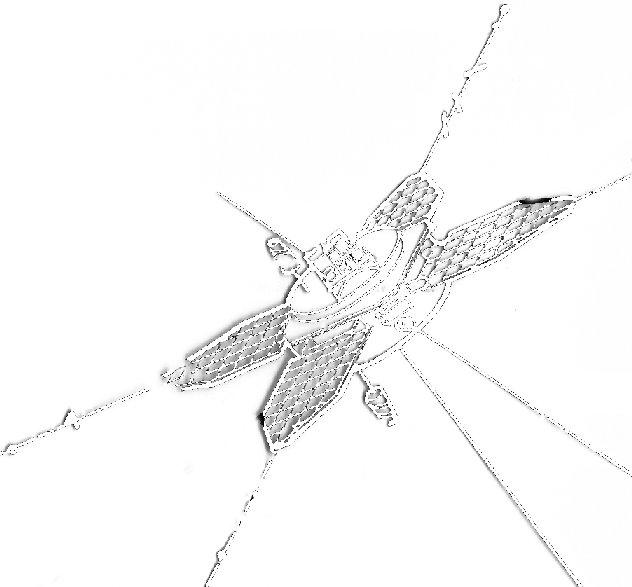
PROGNOZ-M spacecraft (INTERBALL-2).
The main scientific objectives of the mission are:
-
Development of the prototype of the national space weather system, including
monitoring measurements of solar radiation from hard X-ray to ultraviolet ranges,
solar cosmic rays, interplanetary magnetic field and solar wind, onboard facilities
for continuous real-time data transfer.
-
Continuation of the magnetospheric and ionospheric research targeted on studies
of the full Sun-ionosphere chain of energy transformation and serving of space weather
prognostic and monitoring applications. Measurements will include: local magnetospheric,
solar wind and magnetosheath particle, field, and wave diagnostics; ionospheric field-aligned
currents, precipitating particles, cross-polar cap potential monitoring, active ionospheric
experiments.
-
Mapping measurements of the microwave background radiation by a special set of telescopes.
In order to meet all requirements of the research program, the following orbital scenario
was designed for the INTERBALL-3 spacecraft:
-
Launch in the Sun-Earth L1 point fly-by
orbit and return to Earth. Duration of this stage of the flight will be 3-4 months.
-
Transfer (apogee lowering) to near-Earth elliptic orbit with apogee 350000-400000 km.
Other parameters of the orbit will be selected to maximize the spacecraft location inside
the magnetotail. Duration of this stage is planned to be 2-3 years.
-
Transfer to L2
fly-by orbit. This stage is currently considered as optional.
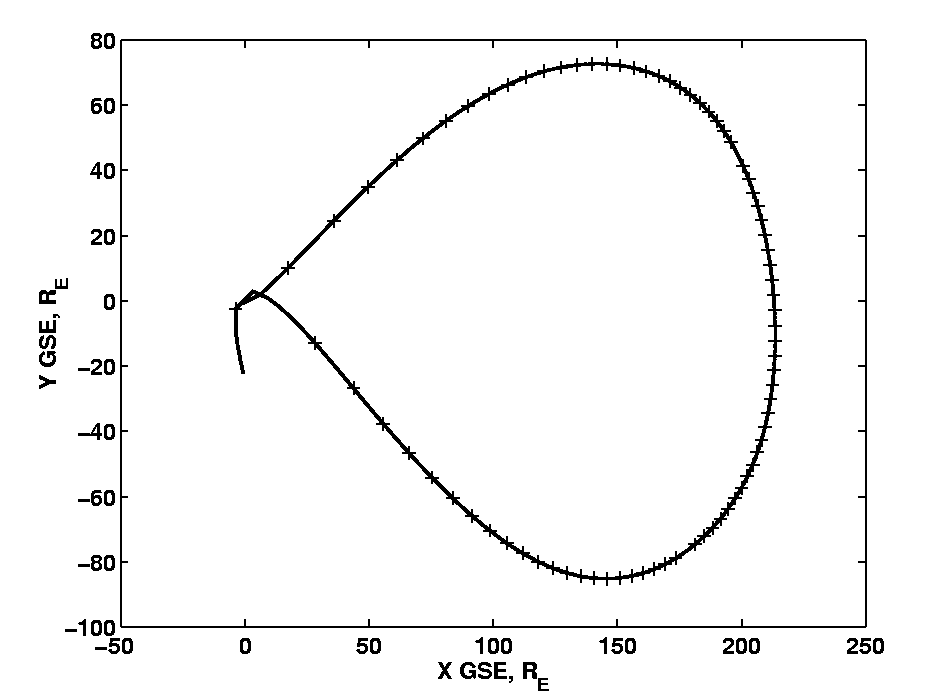
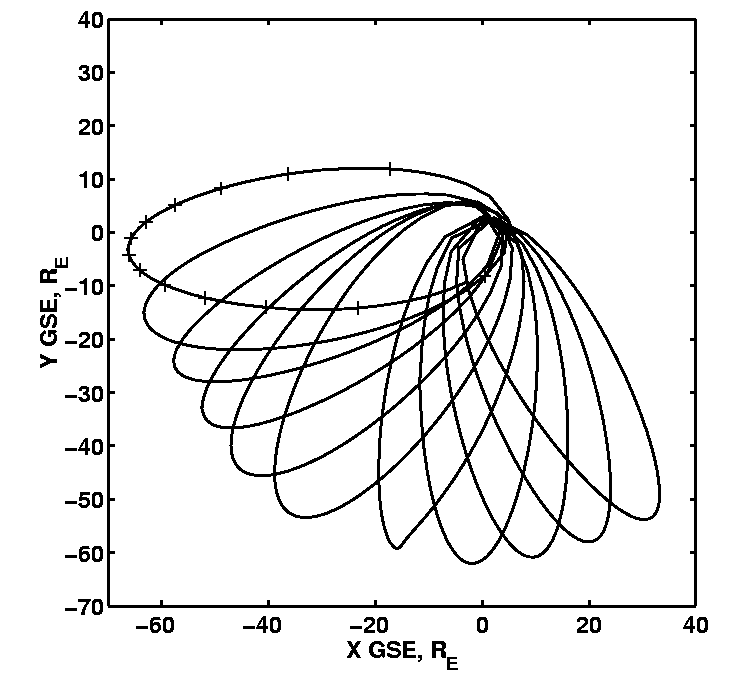
INTERBALL-3 orbit (1st and 2nd stages) with daily tick marks.
The transfer to the L1 orbit will be performed by means
of standard MOLNIYA launcher. The transition from this orbit to elliptic orbit with
apogee 350000 km (required DV is 150 m/s) will be performed by means of additional
spacecraft engine to be installed onboard INTERBALL-3. The optional maneuver to the
L2 orbit will require the Moon gravity assist.
The experiment on microwave
background measurements requires special ballistic conditions to operate successfully.
(Sun, Moon and Earth should be out of field of view of telescopes.) It is estimated that
with proposed orbital scenario sufficiently sensitive microwave measurements will be
possible during 50% of time.
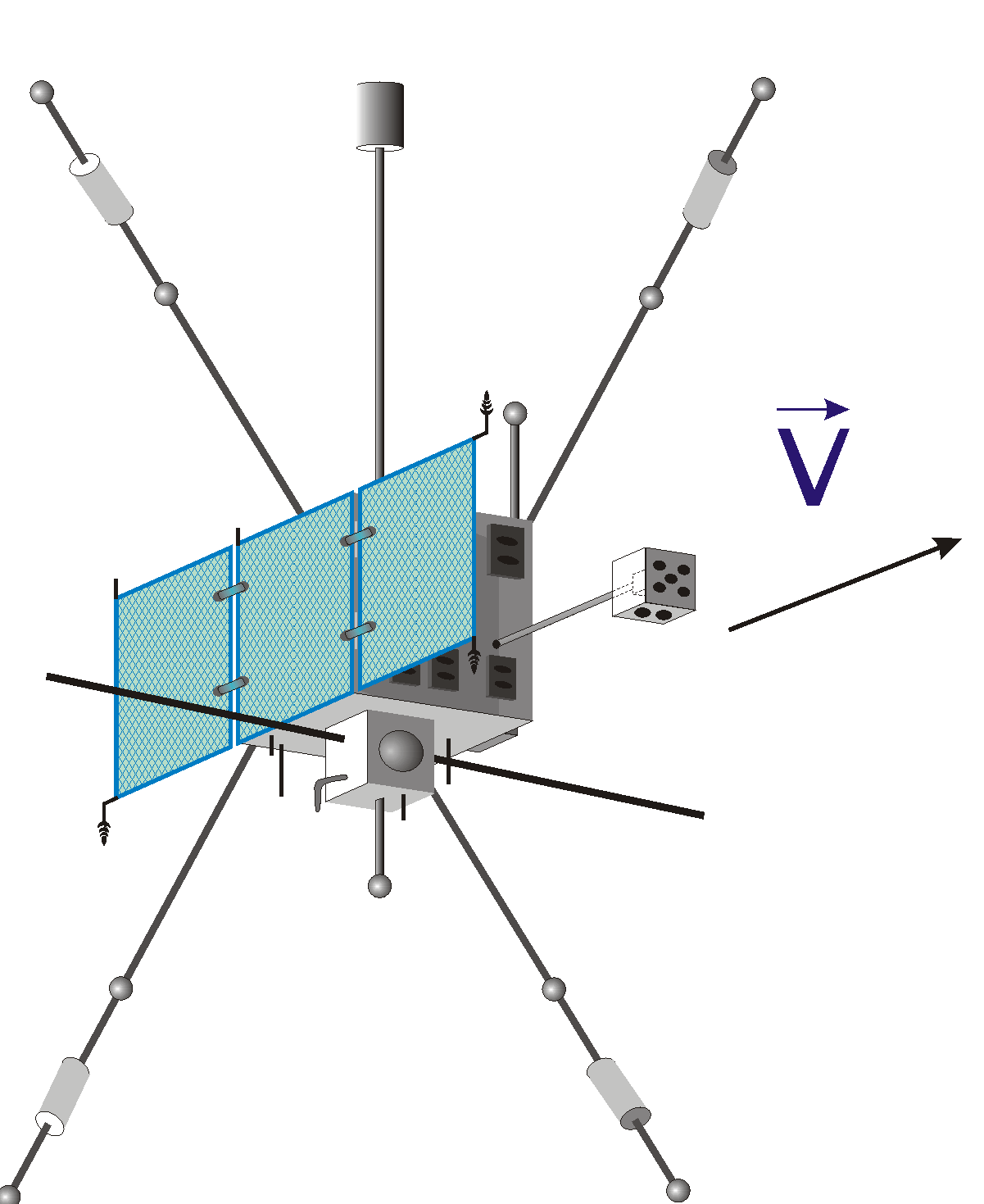
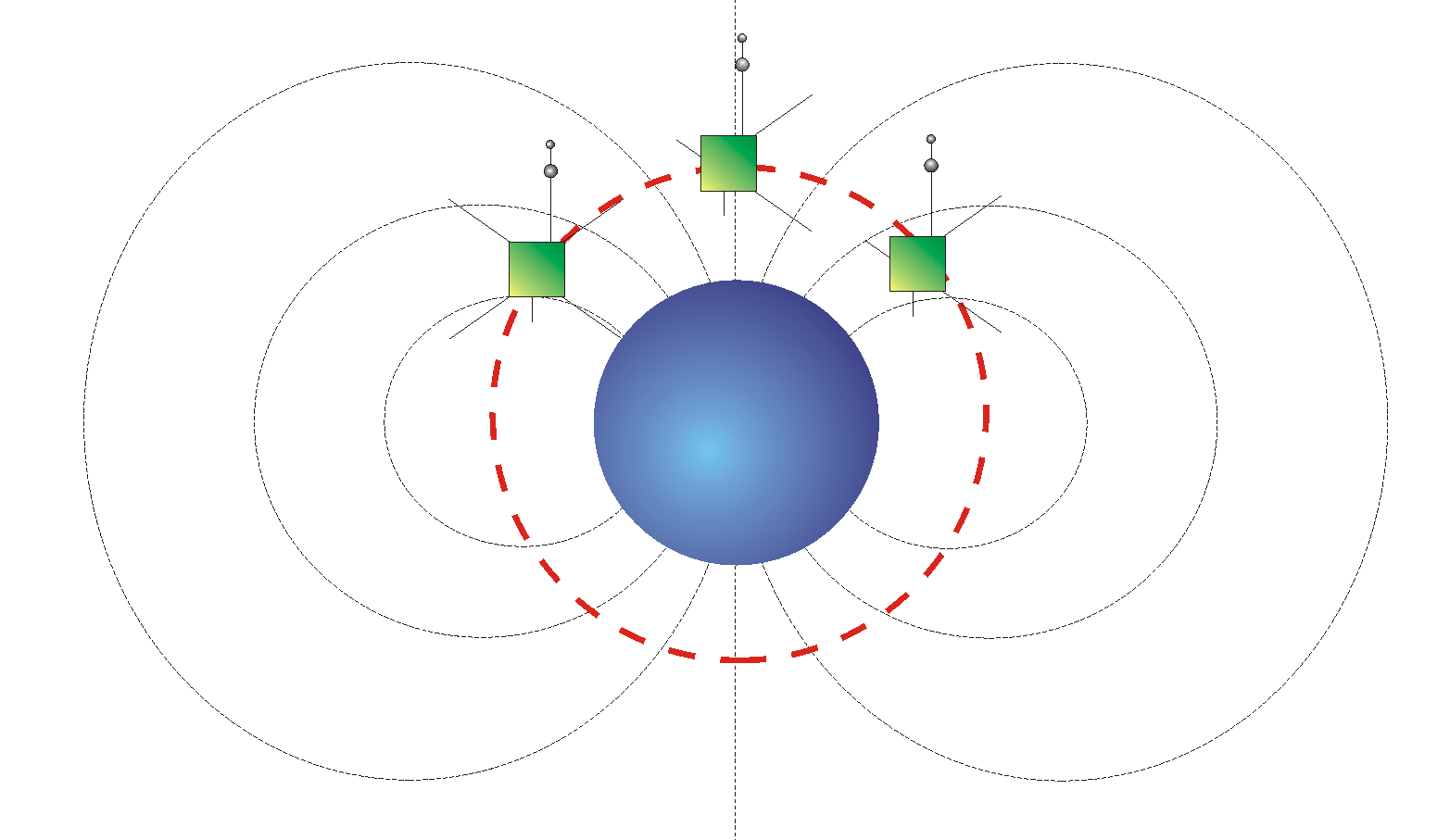
Low apogee micro-spacecraft and orbit.
The low apogee satellites will be placed on the approx. 700 km high circular sun
synchronous orbit oriented along dusk-dawn meridian Such orientation of the
orbit is necessary for successful monitoring of the cross-polar cap potential.
The spacecraft separation will be adjusted during the mission in order to carry
out a number of active and passive ionospheric experiments. For this project the
novel micro-sat is now being designed by "Yuzhnoe" space center in Dnepropetrovck,
Ukraine. All three satellites will be launched together by TSIKLON or DNEPR launcher.
Contact addresses:
L.Zelenyi or
A.Petrukovich
To INTERBALL Homepage
Back to IKI Homepage





